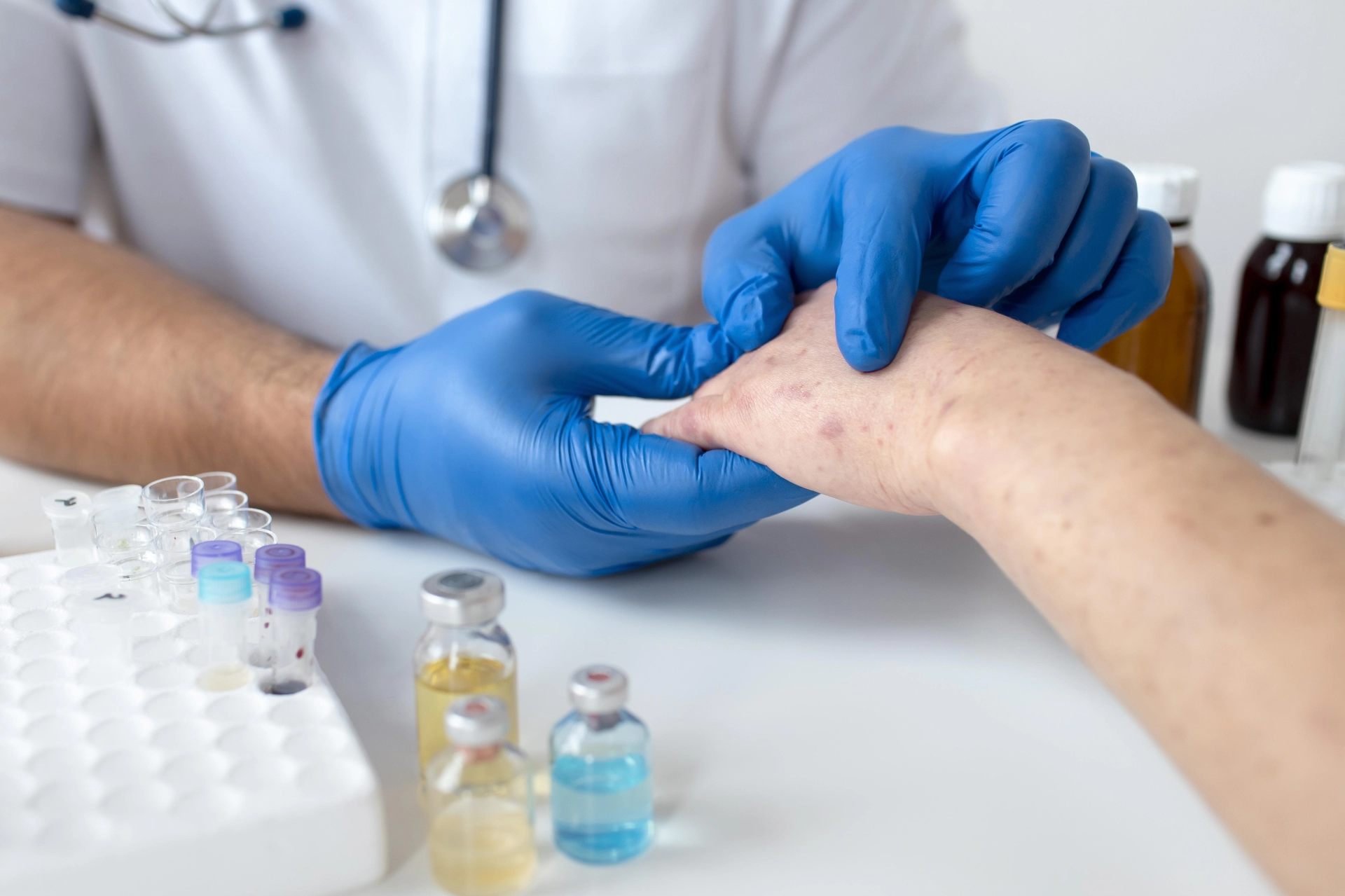Measles is a highly contagious viral disease that causes fever, cough, and a characteristic skin rash. The infection is transmitted by airborne droplets and can lead to severe complications, including pneumonia and inflammation of the brain. Furthermore, having had measles weakens the immune system, making a person more susceptible to other infections. Before mass vaccination, measles claimed millions of lives annually worldwide. The disease is also called ordinary measles, 10-day measles, or rubeola.
It should be distinguished from rubella (German measles)—which is a completely different infection.
Symptoms of Measles
Signs of the disease develop gradually. First, a high temperature, cough, runny nose, and red eyes appear. After 2–3 days, characteristic white spots on a background of red dots—the so-called Koplik's spots—appear in the oral cavity. Then, a rash appears, typically on the 3rd–5th day of the illness.
Key symptoms
:
• high temperature;
• dry, "barking" cough;
• red or inflamed eyes;
• runny nose;
• weakness, fatigue;
• white spots with a red border in the mouth;
• extensive skin rash;
• sore throat and muscle aches;
• headache;
• sometimes—digestive disorders (vomiting, diarrhea, abdominal pain).
The rash usually begins on the face, then spreads down the body: neck, chest, back, arms, legs. In light-skinned people, it looks red; in dark-skinned people, it may be purple or less noticeable. The spots can merge, but itching rarely occurs.
Causes and Transmission Routes
The causative agent of the disease is the measles virus (Morbillivirus). It spreads through the air when an infected person coughs, sneezes, talks, or breathes. Virus particles can remain in the air and on surfaces for up to two hours after the infected person leaves.
Infection can occur:
• by being close to a sick person;
• through shaking hands, kissing, sharing food or drinks;
• through objects and surfaces contaminated with viral particles;
• from mother to child during pregnancy, childbirth, or breastfeeding.
Measles is one of the most contagious diseases: if one sick person and 10 unvaccinated people are in a room, 9 of them will become infected. The risk of transmission remains from the onset of the first symptoms, for 4 days before the rash appears and for another 4 days after.
Risk Factors
Severe progression and complications are more likely to develop in:
• children younger than 5 years and adults older than 20 years;
• pregnant women;
• people with a weakened immune system.
Measles Complications
The consequences of the infection can range from mild to life-threatening:
• otitis (ear infection);
• dehydration due to severe diarrhea;
• bronchitis, laryngitis;
• pneumonia;
• vision loss;
• encephalitis (brain swelling);
• subacute sclerosing panencephalitis (SSPE) — a rare but fatal infection of the nervous system that occurs years later;
• measles inclusion body encephalitis (MIBE), more common in people with immunodeficiency;
• death.
Infection during pregnancy increases the risk of premature birth and low birth weight for the child.
Diagnosis
A doctor may suspect measles based on the appearance of the rash and the patient's complaints. To confirm the diagnosis, the following are used:
• blood test;
• nose or throat swab;
• urine test.
Treatment
There is no specific cure for measles. The illness lasts about 10–14 days if complications do not arise. In a hospital setting, patients may be prescribed Vitamin A, which reduces the likelihood of severe consequences. However, it should not be taken without medical supervision: an overdose is dangerous for the liver and other organs.
T
o ease symptoms at home, it is recommended to:
• drink plenty of fluids;
• get bed rest;
• take antipyretics and pain relievers (Paracetamol, Ibuprofen);
• gargle with a saline solution.
Seek immediate medical attention if there is:
• difficulty breathing;
• chest pain;
• sensitivity to light;
• severe headache or neck stiffness;
• confusion;
• severe vomiting or diarrhea.
Prognosis
Measles can cause a severe course: approximately 2 out of 5 people who become ill require hospitalization. Even after recovery, a person remains more vulnerable to other infections. Dangerous complications can develop months or even years after the illness.
Prevention
The best way to protect yourself is vaccination. Vaccinations are given in childhood, but they can also be administered to adults if necessary. Illness after vaccination is extremely rare, especially if both doses are administered. One dose provides less protection.






